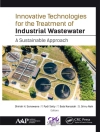The main aim of this book is to understand the interplay between the SDGs and urban health. This is a critical issue in cities, considering the complexity of health issues and how they transcend most SDGs. However, the SDGs are premised on a broad set of generalised indicators and targets. Simultaneously, local contexts differ; thus, a one-size-fits-all understanding of urban health problems is not helpful. Therefore, the SDGs require Health in All Policies (Hi AP) – “an approach to public policy across sectors that systematically takes into account the health implications of decisions, seeks synergies and avoids harmful health impacts to improve population health and health equity” (Ramirez-Rubio et al. 2019). In applying the Hi AP concept, this book adopts a case study approach and considers the poor neighborhoods of a South African city, specifically Bloemfontein, part of the Mangaung Metropolitan Municipality. Each chapter presented in the book considers a particular SDG and how that goal relates to urban health.
Daftar Isi
Chapter 1. INTRODUCTION.- Chapter 2. ENDING EXTREME POVERTY AND ENHANCING URBAN HEALTH. Chapter 3. NO HUNGER SDG AND URBAN HEALTH IN MANGAUNG.- Chapter 4. WATER AND SANITATION FOR URBAN HEALTH: A GENDER PERSPECTIVE ON IMPACTS AND COPING STRATEGIES IN MANGAUNG METROPOLITAN MUNICIPALITY.- Chapter 5. BUILDING RESILIENT URBAN INFRASTRUCTURE AND INNOVATION FOR URBAN PUBLIC HEALTH: A CASE STUDY OF BLOEMFONTEIN, SOUTH AFRICA.- Chapter 6. LIVEABILITY ASSESSMENT IN SOUTH AFRICA’S HOSTEL ACCOMMODATION: IMPLICATIONS FOR URBAN HEALTH AND SUSTAINABLE DEVELOPMENT GOAL 11.- Chapter 7. INFORMAL SETTLEMENTS UNDER THE IMPACT OF CLIMATE CHANGE AND THE COMMUNITY HEALTH FACTOR IN MANGAUNG METROPOLITAN MUNICIPALITY, SOUTH AFRICA.- Chapter 8. EXAMINING THE IMPACT OF URBAN GREEN SPACE CHANGES ON PUBLIC HEALTH.- Chapter 9. PEACE, JUSTICE & STRONG INSTITUTIONS: REFLECTIONS ON HEALTH GOVERNANCE AND HEALTH INEQUALITIES IN MANGAUNG.- Chapter 10. LIVED EXPERIENCES OF THE ENERGY CONSUMERS OF SELECTED SITES IN DISADVANTAGED COMMUNITIES IN BLOEMFONTEIN, SOUTH AFRICA.- Chapter 11. CONCLUSION.
Tentang Penulis
ABRAHAM R MATAMANDA (Ph D Urban & Regional Planning) is an NRF Y2-rated Urban and Regional Planner. Abraham lectures in the Department of Urban & Regional Planning at the University of Free State (UFS) and is the Deputy Chair of the SARCh I Chair on City Region Economies in the Faculty of Economic and Management Sciences at UFS. Currently, he serves as the editor of the Town Planning Journal published by UFS and serves on the academic editorial board of Plos Water Journal. Abraham is also the current Chairperson of the Free State Chapter of the South African Planning Institute (SAPI). He is a fellow of the Department of Higher Education and Training (DHET) Future Professorate Programme Phase 1, third Cohort. Abraham is the South African PI for a global collaborative research project exploring how children and young people from monetary poor households have adapted to the COVID-19 pandemic focusing on food, education and play/leisure. His research focuses on urban governance and planning, climate change adaptation and resilience, informal Global South urbanism, urban land markets and housing studies.
VERNA NEL qualified as a town and regional planner at Wits University and obtained her MSc and Ph D through UNISA. After three decades of working primarily in municipalities, she moved to the Urban and Regional Planning Department of the UFS. She is a. She is also affiliated with the SARCh I Chair on City Region Economies in the Faculty of Economic and Management Sciences at UFS. She is an NRF C2-rated scholar. Besides postgraduate supervision, Verna has written one book and co-edited four books which reflect her broad interests in planning. These include spatial governance, secondary and mining cities, local economic development, and spatial resilience.












